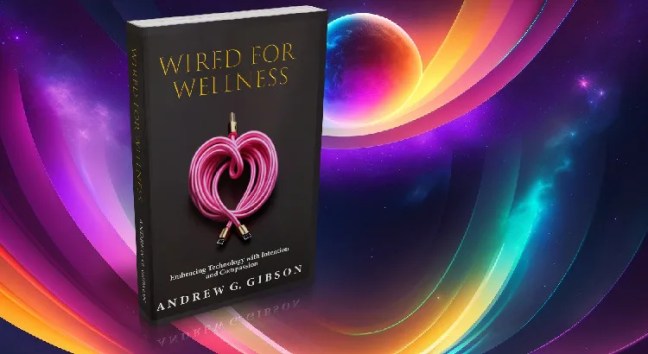In today’s fast-paced world, the concept of “slow living” has gained traction as a counterbalance to the relentless hustle and bustle of modern life. Far from being an act of disengagement, slow living encourages individuals to embrace a more mindful and intentional approach to life. This lifestyle philosophy is not about doing less for the sake of it, but about doing what truly matters. It emphasizes the importance of being present, fostering deep connections, and aligning daily activities with personal values. For those looking to reclaim a sense of fulfillment and peace, slow living offers a compelling alternative to the pressures of constant productivity.
The Origins and Philosophy of Slow Living
The roots of slow living can be traced back to the slow movement, which began with the slow food movement in Italy during the late 1980s. Originally a response to the rise of fast food, this movement advocated for the enjoyment of local cuisine, sustainable farming practices, and a deeper connection to the food we eat. Over time, the principles of this movement expanded beyond food, influencing various aspects of life, including travel, fashion, and urban living. Today, slow living encompasses a broad philosophy that encourages individuals to slow down, be more intentional, and prioritize quality over quantity in all areas of life.
At its core, slow living is about intentionality. It’s about making conscious choices that reflect one’s values and priorities, whether that means spending more time with loved ones, savoring simple pleasures, or engaging in activities that bring joy and fulfillment. This approach challenges the “do more, achieve more” mentality that often dominates modern society, advocating instead for a life that values presence, connection, and well-being. By adopting a slower pace, individuals can cultivate a deeper connection with themselves and the world around them.
Key Principles of Slow Living
Slow living is guided by several key principles that distinguish it from other lifestyle philosophies. One of the most important is mindfulness and presence. This involves being fully engaged in the moment, whether you’re enjoying a meal, having a conversation, or simply taking a walk. By reducing distractions and focusing on the here and now, slow living helps individuals develop a greater appreciation for life’s small pleasures.
Sustainability is another core principle of slow living. This lifestyle encourages people to consume less, choose quality over quantity, and consider the environmental impact of their choices. This often leads to adopting more minimalist lifestyles and supporting local, ethical businesses. By living more sustainably, individuals can contribute to a healthier planet while also simplifying their own lives.
Connection is also central to slow living. The movement values deep, meaningful relationships with others, whether that’s with family, friends, or the wider community. It encourages people to nurture these relationships by spending quality time together, engaging in shared activities, and being present in each other’s lives. This focus on connection helps to create a more fulfilling and supportive social environment.
Finally, slow living promotes balance and simplification. It encourages finding a healthy balance between work, leisure, and personal growth. Simplifying life might involve decluttering both physically and mentally, reducing unnecessary commitments, or focusing on what truly matters. By embracing these principles, individuals can create a life that is more aligned with their values and allows for greater well-being.
The Benefits of Embracing Slow Living
Adopting a slow living lifestyle can lead to numerous benefits, both for individuals and society as a whole. One of the most significant is a reduction in stress. By slowing down and focusing on what truly matters, people can avoid the overwhelm and burnout that often come with trying to do too much. This can lead to improved mental health, greater emotional resilience, and a deeper sense of peace.
Another benefit of slow living is a greater sense of fulfillment. When individuals prioritize meaningful experiences over material success or constant productivity, they often find that their lives feel richer and more satisfying. Slow living encourages people to engage more deeply with their surroundings, relationships, and daily activities, leading to a more authentic and fulfilling existence.
Slow living also fosters a stronger connection to the environment. By choosing sustainable practices and consuming less, individuals can reduce their ecological footprint and contribute to a healthier planet. This not only benefits the individual but also supports the broader goal of creating a more sustainable and equitable world.
How to Incorporate Slow Living into Your Life
Incorporating slow living into your life doesn’t require drastic changes. It can start with small, intentional steps that align with the core principles of the movement. For example, you might begin by setting aside time each day for reflection or mindfulness, reducing your digital consumption to be more present with loved ones, or making more mindful choices about how you spend your time and resources.
Another way to embrace slow living is to simplify your surroundings. This might involve decluttering your home, reducing the number of commitments on your calendar, or focusing on quality over quantity in your purchases. By simplifying your life, you can create more space for the things that truly matter, leading to a more balanced and fulfilling existence.
Finally, slow living encourages a focus on sustainability and connection. Consider supporting local, ethical businesses, reducing your environmental impact, and nurturing your relationships with others. By making these intentional choices, you can create a life that is not only more aligned with your values but also more enriching and enjoyable.
Conclusion: Slow Living as a Path to Fulfillment
Slow living offers a powerful antidote to the pressures of modern life. Rather than disengaging from reality, it encourages a deeper, more meaningful engagement with the world around you. By prioritizing mindfulness, sustainability, connection, balance, and simplification, slow living allows individuals to create a life that is both fulfilling and sustainable. Whether you’re looking to reduce stress, foster deeper relationships, or simply find more joy in everyday moments, slow living provides a path to a more intentional and satisfying way of life.














